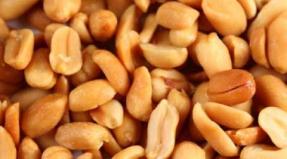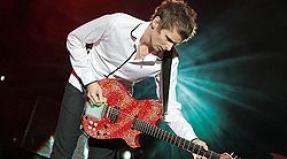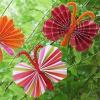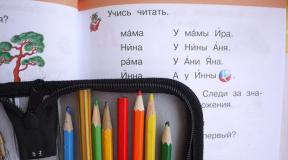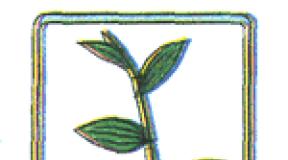The chronological table of Nekrasov's life and work is complete. The main dates of life and work. The beginning of literary activity
The name of the Russian poet N.A.Nekrasov is known to everyone. Some people fell in love with his children's works "Grandfather Mazai and the Hares" or "Peasant Children". Others come to mind the poems "Frost, Red Nose", "Who Lives Well in Russia". Still others associate this name with the protector of the peasants and all the oppressed.
The difficult path traveled by the poet in life and literature will help to present a chronological table. Nekrasov was never afraid of difficulties, and no circumstances shook his confidence that the Russian people were worthy of respect and veneration.
Origin and childhood
The poet was a nobleman: his father, a stern and despotic man, had an estate in the Yaroslavl province. Nikolai lived in Greshnevo from the age of three (the years of N.A. Nekrasov's life - 1821-1877) until he entered the gymnasium. This time left a heavy mark on the boy's soul, as he often witnessed his father's cruel attitude towards serfs, towards his obedient wife, towards his own children. Also, the Vladimirskaya road, along which people of different classes constantly walked or rode somewhere, and the great Russian Volga river - here he first heard the song of barge haulers, were forever remembered.
The period of life associated with studies is reflected in a chronological table.
From an early age, Nekrasov was distinguished by a willingness to defend her views. The first difficulties prepared by fate, he had to overcome as early as adolescence.
Life in St. Petersburg: a chronological table
At first, when the capital was undisturbed, hunger and poverty awaited. But the desire to study and engage in literary creativity turned out to be stronger. Nikolai Alekseevich has come a long way from critics' rejection of the first collection to the editor of the most popular magazines and a poet known throughout the country.
Arrives to Petersburg | His father, a former officer, insisted on entering the noble regiment. But young Nekrasov chooses his own path, as a result of which he loses all support from home. For about 3 years he has been making a living and listening to lectures at the university. However, his dream of getting a higher education never came true due to lack of funds. |
|
Acquaintance with V. Belinsky | This meeting will largely determine the future fate of N. Nekrasov and bring him closer to the revolutionary democrats. Communication with a critic has replaced the beginning poet with a university. In addition, Belinsky introduced him to literary circles. |
|
Rent "Sovremennik" | Together with I. Panaev, they decide to start publishing a magazine created by A. Pushkin. Very soon all progressive minds of St. Petersburg will begin to flock here. Until the closing of Sovremennik in 1866, he was its editor. |
|
Civil marriage with A. Panaeva | N. A. Nekrasov dedicated the best poems to love lyrics to Avdotya Yakovlevna. But they were also like-minded people and associates. |
|
Comes up with "Whistle" | It was a supplement to Sovremennik. The idea belonged entirely to N. Nekrasov, but N. Dobrolyubov was mainly engaged in publishing. |
|
Becomes the owner of the estate | The Karabikha estate was located in the Yaroslavl province. He came here to relax, enjoy nature, and hunt. And, of course, it was written differently here too. |
|
Comes to the "Notes of the Fatherland" | Until the end of his life, together with M. Saltykov-Shchedrin, he was publishing a magazine that practically replaced Sovremennik. |
|
Acquaintance with Fekla (Nekrasov called her Zina) Viktorova, future wife | The girl at that time was not even 21 years old, but it was she who spent next to Nikolai Alekseevich last years his life. And 8 months before the death of the poet, they got married. |
|
Onset of the disease | Doctors diagnose N. Nekrasov with rectal cancer. No treatment helps the poet anymore. |
|
He was buried at the Novodevichy cemetery. |
The beginning of literary activity
As the chronological table shows, Nekrasov was always distinguished by a craving for creativity (we note at least the moment that he was the editor of journals from 1846 to 1877).
Elena Andreevna, his mother, played a significant role in the formation of the future poet. She dreamed of seeing her son educated and encouraged her passion for poetry in every possible way. Nikolai Alekseevich read a lot during his studies at the gymnasium. 
Arriving in St. Petersburg, Nekrasov was able to publish several of his poems. But they were published in minor magazines, and paid very little for them. And the collection "Dreams and Sounds", published in 1840, did not bring fame and fame. Trying to survive in a strange city, Nekrasov wrote in various genres. Later he spoke rather harshly about his early work.
The first success came in 1845 with the poem "On the Road".
Chronological table of Nekrasov: briefly about the best works
"On the way". Belinsky, who defeated the first collection, is delighted |
|
"Yesterday ..." - printed after the death of the poet |
|
"Last Elegies" - a cycle of poems |
|
The collection of 4 sections "Poems of N. Nekrasov", opened with the work "The Poet and the Citizen", included the poem "Sasha". The success was huge, but at the same time the persecution of censorship intensified |
|
"Reflections at the front door" |
|
"Peddlers" |
|
"In full swing ...", "Green Noise", "Knight for an Hour" |
|
"Frost, Red Nose", "In Memory of Dobrolyubov", "Orina, Soldier's Mother" |
|
"Railway" |
|
"Who lives well in Russia" - part 1 (full text - in 1868) |
|
"Songs of Free Speech" - a cycle of satire |
|
"Grandfather" - a poem about the Decembrists |
|
"Russian women" |
|
N. A. Nekrasov is preparing a book of dying poems "Last Songs" |
The value of N.A.Nekrasov's creativity
In his works, the poet not only developed the best literary traditions that had developed at the beginning of the century, but also significantly expanded the possibilities of Russian poetry. Reliance on folklore, active appeal to the life of the people, epic narration, close to colloquial vocabulary - these are the distinctive features of poems and poems by Nikolai Alekseevich, which, of course, cannot be contained in a short chronological table. 
Nekrasova was always distinguished by her devotion to the interests of Russia and its people, which A. Lunacharsky noted in his statement: "... there is no such person in Russian literature ... before whom one would bow lower with love and reverence than before the memory of Nekrasov!"
A chronological table of the life and work of Nekrasov is set out in this article.
N.A.Nekrasov chronological table
Nikolay Alekseevich Nekrasov - poet, writer and publicist, revolutionary democrat, classic of Russian literature.
| the date | Event |
|---|---|
| November 28 1821 | Nekrasov was born in Nemirov, Ukraine, where his father, Major A.S. Nekrasov... He spent his childhood in the village of Greshnevs in the Yaroslavl province on his father's estate on the Volga. |
| 1832- 1837 | Nikolai studied at the Yaroslavl gymnasium and even then began to write poetry. |
| 1838 | against the will of his father, N.A. Nekrasov went to St. Petersburg to enter the university. He did not enter the university, he lived in poverty. |
| 1840 | Publishes his first collection of poems "Dreams and Sounds", but he was not successful |
| 1843 | the poet met with V.G. Belinsky, whose ideas had a huge influence on Nekrasov. |
| 1850-1860s | during the social upsurge of the peasant reform, Nekrasov published the works "The Poet and the Citizen", "Song of Eremushka", "Reflections at the Front Entrance", the poem "The Peddlers". In 1856, a collection of "Poems" (rayworks for 10 years). |
| 1847- 1866 | Nikolai Alekseevich published and edited the Sovremennik magazine. |
| 1868 | worked on the journal Otechestvennye zapiski. |
| 1856- 1877 | period of active creative activity. Publication of the collection "Last Songs". Writes the 4th part "Who lives well in Russia." |
| December 27th 1877 | Nekrasov diedin Petersburg. (due to a serious illness.) |
This article contains a brief chronological table of Nekrasov's life, you can make up more detailed ones yourself based on his biography.
The name of the Russian poet N.A.Nekrasov is known to everyone. Some people fell in love with his children's works "Grandfather Mazai and the Hares" or "Peasant Children". Others come to mind the poems "Frost, Red Nose", "Who Lives Well in Russia". Still others associate this name with the protector of the peasants and all the oppressed.
The difficult path traveled by the poet in life and literature will help to present a chronological table. Nekrasov was never afraid of difficulties, and no circumstances shook his confidence that the Russian people were worthy of respect and veneration.
Origin and childhood
The poet was a nobleman: his father, a stern and despotic man, had an estate in the Yaroslavl province. Nikolai lived in Greshnevo with three N.A. Nekrasov - 1821-1877) before entering the gymnasium. This time left a heavy mark on the boy's soul, as he often witnessed the cruel attitude of his father towards serfs, towards his obedient wife, towards his own children. Also, the Vladimirskaya road, along which people of different classes constantly walked or drove, and the great Russian - here he first heard the song of barge haulers, were forever remembered.
The period of life associated with studies is reflected in a chronological table.
From an early age, Nekrasov was distinguished by a willingness to defend her views. The first difficulties prepared by fate, he had to overcome already in
Life in St. Petersburg: a chronological table
At first, when the capital was undisturbed, hunger and poverty awaited. But the desire to study and engage in literary creativity turned out to be stronger. Nikolai Alekseevich has come a long way from critics' rejection of the first collection to the editor of the most popular magazines and a poet known throughout the country.
Arrives to Petersburg | His father, a former officer, insisted on entering the noble regiment. But young Nekrasov chooses his own path, as a result of which he loses all support from home. For about 3 years he has been making a living and listening to lectures at the university. However, his dream never came true due to lack of funds. |
|
Acquaintance with V. Belinsky | This meeting will largely determine the future fate of N. Nekrasov and bring him closer to the revolutionary democrats. Communication with a critic has replaced the beginning poet with a university. In addition, Belinsky introduced him to literary circles. |
|
Rent "Sovremennik" | Together with I. Panaev, they decide to start publishing a magazine created by A. Pushkin. Very soon all progressive minds of St. Petersburg will begin to flock here. Until the closing of Sovremennik in 1866, he was its editor. |
|
Civil marriage with A. Panaeva | N. A. Nekrasov dedicated the best poems to love lyrics to Avdotya Yakovlevna. But they were also like-minded people and associates. |
|
Comes up with "Whistle" | It was a supplement to Sovremennik. The idea belonged entirely to N. Nekrasov, but N. Dobrolyubov was mainly engaged in publishing. |
|
Becomes the owner of the estate | The Karabikha estate was located in the Yaroslavl province. He came here to relax, enjoy nature, and hunt. And, of course, it was written differently here too. |
|
Comes to the "Notes of the Fatherland" | Until the end of his life, together with M. Saltykov-Shchedrin, he was publishing a magazine that practically replaced Sovremennik. |
|
Acquaintance with Fekla (Nekrasov called her Zina) Viktorova, future wife | The girl at that time was not even 21 years old, but it was she who spent the last years of his life next to Nikolai Alekseevich. And 8 months before the death of the poet, they got married. |
|
Onset of the disease | Doctors diagnose N. Nekrasov with rectal cancer. No treatment helps the poet anymore. |
|
He was buried at the Novodevichy cemetery. |
The beginning of literary activity
As the chronological table shows, Nekrasov was always distinguished by a craving for creativity (we note at least the moment that he was the editor of journals from 1846 to 1877).
Elena Andreevna, his mother, played a significant role in the formation of the future poet. She dreamed of seeing her son educated and encouraged her passion for poetry in every possible way. Nikolai Alekseevich read a lot during his studies at the gymnasium.

Arriving in St. Petersburg, Nekrasov was able to publish several of his poems. But they were published in minor magazines, and paid very little for them. And the collection "Dreams and Sounds", published in 1840, did not bring fame and fame. Trying to survive in a strange city, Nekrasov wrote in various genres. Later he spoke rather harshly about his early work.
The first success came in 1845 with the poem "On the Road".

Chronological table of Nekrasov: briefly about the best works
"On the way". Belinsky, who defeated the first collection, is delighted |
|
"Yesterday ..." - printed after the death of the poet |
|
"Last Elegies" - a cycle of poems |
|
The collection of 4 sections "Poems of N. Nekrasov", opened with the work "The Poet and the Citizen", included the poem "Sasha". The success was huge, but at the same time the persecution of censorship intensified |
|
"Reflections at the front door" |
|
"Peddlers" |
|
"In full swing ...", "Green Noise", "Knight for an Hour" |
|
"Frost, Red Nose", "In Memory of Dobrolyubov", "Orina, Soldier's Mother" |
|
"Railway" |
|
"Who lives well in Russia" - part 1 (full text - in 1868) |
|
"Songs of Free Speech" - a cycle of satire |
|
"Grandfather" - a poem about the Decembrists |
|
"Russian women" |
|
N. A. Nekrasov is preparing a book of dying poems "Last Songs" |
The value of N.A.Nekrasov's creativity
In his works, the poet not only developed the best literary traditions that had developed at the beginning of the century, but also significantly expanded the possibilities of Russian poetry. Reliance on folklore, active appeal to the life of the people, epic narration, close to colloquial vocabulary - these are the distinctive features of poems and poems by Nikolai Alekseevich, which, of course, cannot be contained in a short chronological table.

Nekrasova was always distinguished by her devotion to the interests of Russia and its people, which A. Lunacharsky noted in his statement: "... there is no such person in Russian literature ... before whom one would bow lower with love and reverence than before the memory of Nekrasov!"
Nikolay Alekseevich Nekrasov- Russian poet, perceived by his contemporaries as the flagship of revolutionary-democratic lyrics and the personification of the "conscience of the era." In Nekrasov's lyrics, which opened a new page in the development of Russian realism , the dramas and tragedies of everyday life of representatives of the social lower classes unfolded and the deep properties of the national character were revealed .
N. Nekrasov's life in dates and facts
December 10, 1821... - was born into a noble family in the town of Nemirovo, Vinnitsa district, Podolsk province. Three years later, the family moved to the village of Greshnevo, Yaroslavl province.
1832-1837- studied at the Yaroslavl gymnasium.
IN 1838 g... - came to St. Petersburg hoping to continue his education there, but when he tried to enter the university he failed and, having enrolled as a free listener, took up professional literary work.
1840 g.- the first poetry collection of Nekrasov was published "Dreams and Sounds", which criticism assessed negatively. Afflicted by the failure, the author bought the copies available in the bookstores and burned them.
1840-1844- a period of difficult literary day-to-day labor, which, however, opened the poet's access to well-known periodicals. During these years N.A. Nekrasov became close to the literary critic Belinsky and the Panaevs, who played a significant role in Russian literary life.
1845-1846- the collections "Physiology of St. Petersburg" and "St. Petersburg Collection" were published, which included Nekrasov's works.
FROM 1847 g... and for the next 19 years Nekrasov was the publisher and de facto editor of the Sovremennik magazine. The concept of this edition in the 40s. was largely determined by Belinsky. Despite the brutal pressure of the censorship, Sovremennik maintained its position as an outpost of progressive thought.
1856 g.- a collection was published "Poems", which included the best works of the poet, created by him for 10 years. This book was a great success with readers. In the same year, Nekrasov went on a trip abroad, which lasted about a year. Material from the site
1860s were overshadowed by painful events: the arrest of several employees of Sovremennik and the subsequent closure of the magazine, the death of N.A. Dobrolyubov, one of the most talented literary critics and closest associates of Nekrasov. At the same time, this period was extremely beneficial for the poet in a creative sense, as evidenced by the appearance of his numerous poems and the famous poem "Jack Frost" (1864), as well as the beginning of work on a monumental poem "Who lives well in Russia?", which he wrote for the rest of his life.
1868 g.- got a job as one of the editors in the journal Otechestvennye zapiski.
1870-1873- poems were created "Grandfather"(1870) and "Russian women" (1873) dedicated to the theme of the Decembrists.
IN 1877 g. Nekrasov's collection was published "Last Songs".
Didn't find what you were looking for? Use search
On this page material on topics:
- biography of Nekrasov briefly
- short biography of Nekrasov over the years
- leo Tolstoy biography in dates
- events in Nekrasov's life in dates
- biography of nekrasoa in dates
Chronological table of Nekrasov is one of better ways briefly familiarize yourself with the periods of the life of the great poet. It is in it that all the most important eventsthat influenced the fate of the author. These significant stages of his biography will help both schoolchildren and graduates to better understand the motives of the poet's activities and features of his character.
In fact, you will be able to trace the life and work of Nikolai Alekseevich Nekrasov by dates. This format is designed for those who want to quickly and clearly get the basic information and facts. In addition to the standard data on the birth and death of the poet, the memo will acquaint you with the key periods of his creative activity. You will learn a lot about your favorite author and his works, you can quickly remember important dates... Our website contains a detailed biography of Nekrasov in the table.
1821, November 28 (December 10) - N.A. was born Nekrasov in Ukraine in the town
Nemirov of the Podolsk province in the noble family of retired lieutenant Alexei Sergeevich and Elena Andreevna Nekrasov.
1824-1832 - Life in the village of Greshnevo, Yaroslavl province
1838
- Leaves the estate of his father Greshnevo to enter the St. Petersburg noble regiment at his will, but, against his wishes, decides to enter St. Petersburg University;
the father deprives him of his livelihood.
1840 - The first imitative collection of poems "Dreams and Sounds".
1843 - Acquaintance with V.G.Belinsky.
1845
- The poem "On the Road";
enthusiastic review of V.G. Belinsky.
1845-1846 - Publisher of two collections of natural school writers - "Physiology of Petersburg" and "Petersburg Collection".
1847-1865 - Editor and publisher of the Sovremennik magazine.
1853 - Cycle "Last Elegies".
1856 - The first collection "Poems by N. Nekrasov".
1861
- The poem "Peddlers";
publication of the second edition of "N. Nekrasov's Poems".
1862
- Poem "A Knight for an Hour", poems "Green Noise", "Countryside Suffering is in full swing";
the acquisition of the Karabikha estate near Yaroslavl.
1863-1864 - Poem "Frost, Red Nose", poems "Orina, Soldier's Mother", "In Memory of Dobrolyubov", "Railway".
1868 - The release of the first issue of the new magazine N.A. Nekrasov "Otechestvennye zapiski" with the poem "Who Lives Well in Russia".
1868-1877 - Together with M.E. Saltykov-Shchedrin, he edits the journal Otechestvennye zapiski.
1870 - The poem "Grandpa".
1871-1872 - Poems "Princess Trubetskoy" and "Princess Volkonskaya".
1876 - Work on the fourth part of the poem "Who Lives Well in Russia".
1877 - The book "Last Songs" is coming out of print.
1877 December 27 (1878 January 8) - Nekrasov died in St. Petersburg. He was buried in the cemetery of the Novodevichy Convent.
The most popular materials in February for your class.

